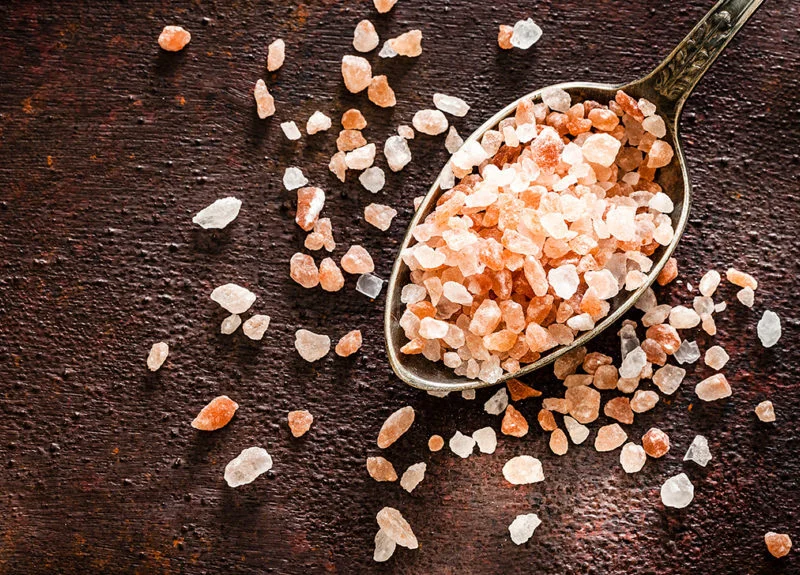Table salt and pink Himalayan salt are very different. The extraction process is where the difference first appears. The Khewra Salt Mines in Pakistan, which are near to the Himalayas, are where pink Himalayan salt is mined. This mine’s pink Himalayan salt is reportedly created by the evaporation of long-gone pools of water. It is just lightly treated after being physically removed. However, is Himalayan salt superior to regular salt?
Table salt is processed, while Himalayan salt is unrefined, additive-free, and far more natural.
Salt water may also be evaporated to generate salt. Unlike pink Himalayan salt, which only contains sodium chloride, table salt undergoes extensive processing that renders the majority of the salt’s minerals inert. Before the salt is sold in stores, it is injected with additives including anti-caking agents to eliminate moisture and iodine to avoid iodine shortage.
Read More: “Protein-Rich Diets for Women: Promoting Health Condition Management”
The idea that pink Himalayan salt is better than regular salt has been influenced by assertions that it is packed with minerals and has a variety of health advantages.
The key differences between pink Himalayan salt and table salt must be compared in order to establish whether salt is healthier.
Table Salt Versus Himalayan Salt
The common mineral found in both pink Himalayan salt and ordinary salt is sodium chloride. Pink Himalayan salt also has traces of calcium, potassium, strontium, and molybdenum in addition to sodium chloride. Molybdenum and strontium are uncommon minerals. Below is a comparison of the minerals found in 1 gramme of table salt and Himalayan salt.
Pink Himalayan salt, as shown in the table, has a lower sodium content than table salt but a greater content of other minerals including calcium, potassium, magnesium, and iron. The suggested dietary value for the other minerals, however, is only accessible in such little quantities that you would need to take a large quantity of salt—roughly 1.5 kilograms—which is both impossible and unreasonable.
It is doubtful that the other minerals would offer any more health advantages than table salt because they are present in such minute amounts.
In What Ways is Himalayan Salt Superior to Table Salt?
There are claims that the health advantages of pink Himalayan salt outweigh those of table salt, despite the fact that it contains trace levels of other minerals whereas sodium is the sole mineral with a higher concentration in table salt. Studies, however, do not precisely back up these assertions.
Several advantages of pink Himalayan salt are mentioned, including:
- Respiratory problems are resolved
- Maintaining your body’s pH balance
- Reducing ageing symptoms
- Improved sleep quality
- Keeping blood sugar under control
- Enhancing libido

The non-dietary applications of pink Himalayan salt, however, could hold some validity.
Studies have been done on the usage of salt caverns as a specialised therapy for certain lung ailments. The results have suggested that there may be some advantages, but further study is needed to firmly establish the efficacy.
Some of these health advantages are due to sodium chloride, which may be found in any salt and are not just limited to pink salt.
According to certain research, one of the causes of sleep problems might be an insufficient salt consumption. It suggests that appropriate salt intake is necessary to control circadian rhythm. Since pink Himalayan salt was not used in the study, it is clear that sodium chloride is involved in controlling the sleep cycle.
Furthermore, the minerals in pink Himalayan salt are not concentrated enough to change the body’s pH equilibrium. The pH of your body is meticulously regulated by your lungs and kidneys without the help of pink Himalayan salt.
Furthermore, there are simply no studies that support the claim that pink Himalayan salt use may enhance any of these aspects of health, such as blood sugar levels, ageing, or libido, all of which are primarily influenced by factors other than salt intake.
Utilising Pink Himalayan Salt in Food
Whether it is table salt or pink Himalayan salt, it is merely used to a dish to improve the flavour. Salt is constantly added based on taste. Some people could like more salt in their food, while others might prefer less. It depends on the palate of the individual.
To match the saltiness of the finely ground salt when using coarsely ground salt for cooking, use more of the coarsely ground salt. Because finely ground salt is tightly packed, it will have a larger volume when compared to coarsely ground salt. So, pay attention to the measurements based on the type of salt you’re using. In comparison to coarsely ground salt, which has 2000 mg of sodium per teaspoon, finely ground salt has 2300 mg. When using Himalayan salt for cooking, keep in mind that pink salt has a lower sodium content than table salt.
The average adult consumes more than 2300 mg of sodium chloride, or 1 teaspoon of finely crushed salt. Read the label carefully before using Himalayan salt for cooking as the sodium concentration might vary from brand to brand.








